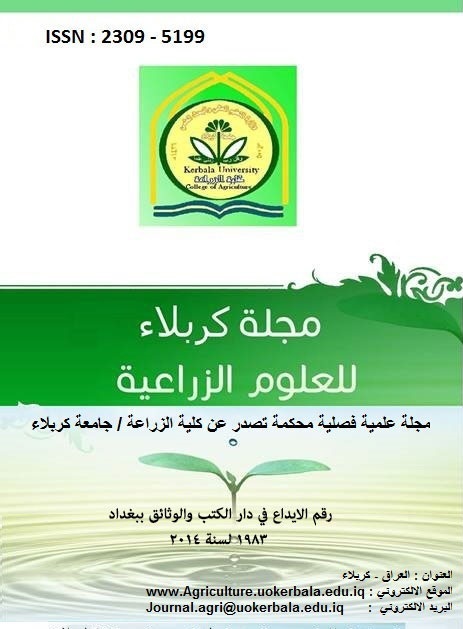Effect of using different diluted concentrations of pineapple juice extract to remove adhesive substance from common carp(Cyprinus carpio L.) eggs.
DOI:
https://doi.org/10.59658/jkas.v3i3.543Abstract
Pineapple juice extract are used at a diluted concentrations ( 0.0001,0.0005,0.001 ,0.002, 0.005 and 0.01 )C³/L , to remove the sticky substance of common carp (Cyprinus carpio L.) eggs, compared with the traditional method (fertilizing solution and 0.5 g tannine/L. water).The results indicated the possibility of using the extract at concentration (0.001 ,0.002,0.005 and 0.01) C³/L , without any adhesions with higher fertilizing and hatching rate in the concentration ( 0.005 and 0.01) C³/L than that of the traditional method which has no significant differences with the concentration( 0.001 and 0.002) C³/L. Also the result showed a short period of hatching in all the experimented concentration of Pineapple juice than the control treatment.
Downloads
Published
How to Cite
Issue
Section
License
Copyright (c) 2016 Copyright (c) 2024 is the Author's article. Published by the Journal of Kerbala for Agricultural Sciences under a CC BY 4.0 license

This work is licensed under a Creative Commons Attribution 4.0 International License.
Licensing Terms
All articles are published under a Creative Commons License and will be directed to the Creative Commons Attribution 4.0 International License (CC BY 4.0) That permits use, distribution, and reproduction in any medium, provided the original work is properly cited. This license also allows the work to be used for commercial purposes.
Use by both non-commercial and commercial users
This content is licensed under a Creative Commons Attribution 4.0 International (CC BY 4.0) license, permitting use by both non-commercial and commercial users. Individual users may access, download, copy, display, and redistribute the articles to colleagues, as well as adapt, translate, and text- and data-mine the content, subject to the following conditions:
- The author's moral rights, including the right of attribution and the right to protect their work from derogatory treatment, are respected.
- Where content in the article is identified as belonging to a third party, users must ensure that any reuse complies with the copyright policies of the owner of that content.
- If the article content is reused for research or educational purposes, users should maintain a link to the appropriate bibliographic citation, including the DOI and a link to the published version on the journal's website.






